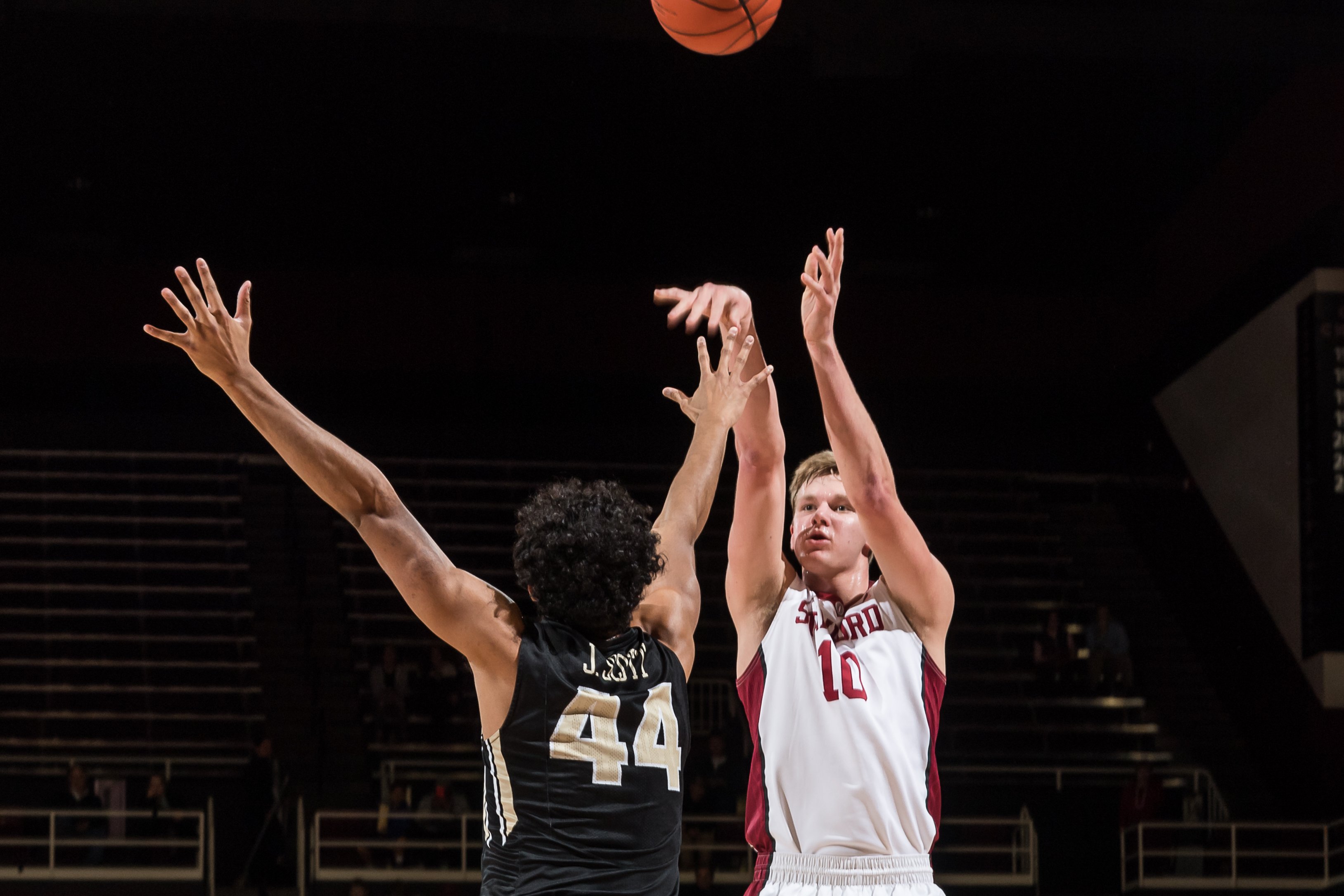Stanford men’s basketball (8-6, 0-2 Pac-12) opened its conference slate with a two-game losing streak after being overpowered by the No. 18 Arizona Wildcats (13-2, 2-0) 91-52 on Sunday. The latest loss at home extends a bad December for the Cardinal, who have now lost three of their last four games despite entering the month with a strong 6-2 record.
While Stanford has made progress on the court under new head coach Jerod Haase, the Cardinal men were overwhelmed by a high-flying, quick Wildcat offense. Arizona possessed an advantage in nearly every statistic, even owning a plus-two turnover margin, but its offensive dominance is best summarized by its impressive 71.4-percent shooting from the three-point line.
The Cardinal showed grit, especially in the first half, despite being outmatched on the evening. After allowing the Wildcats to jump to an early lead, Stanford brought the game to within one possession off a Michael Humphrey layup with 13:07 left in the half.
However, on the ensuing possession, Arizona point guard Parker Jackson-Cartwright dished one of his team-leading six assists to open freshman guard Rawle Alkins, who drained the subsequent three-pointer. Alkins’ basket sparked a 13-5 run for the Wildcats, which effectively kept the game out of the Cardinal’s reach as Arizona marched to victory in the second half.
Alkins ultimately scored a game-high 19 points and was a one of four Wildcat starters with double digits in the score column to conclude the night. Those same four starters combined to go 7-of-9 from the perimeter, and the Stanford defense ultimately had no answer to stop the shooting barrage on the perimeter and conceded a lot of dribble-drives to space created from the increased closeouts.
Sunday’s game against Arizona concluded a two-game conference-opening homestand, in which Stanford dropped both of its games against the two Arizona schools. Many of the problems for Haase and his squad have stemmed from the same issues: offensive spacing and perimeter defense.
Before allowing the Wildcats to score at a high rate, sophomore Marcus Sheffield’s career-high 35 points proved to be not enough in a 98-93 shootout loss to Arizona State on Friday. In that matchup, Stanford allowed a mediocre Sun Devils squad to shoot 54.2 percent from downtown, nearly 20 percentage points above its season average. The Cardinal defense against the three-pointer ranks in the bottom four in the conference.
Stanford’s lack of shooting continues to plague the team, as the Cardinal also own the worst three-point percentage in the Pac-12. Opponents have and will continue to take advantage of Stanford’s inability to score on the outside, and in its losses, Stanford has struggled to find enough space for open shots.
Although the Cardinal entered December on a relative high to start the season, Stanford subsequently went 2-3 during the month as inconsistency continues to plague the squad. Reid Travis’ first half double-double in Stanford’s 79-55 rout of Cal State East Bay on Dec. 16 was overshadowed by a scoreless first period for the junior three days later in a 72-49 loss to SMU to close nonconference play.
In the Cardinal’s last victory against the University of Idaho on Dec. 22, however, an 86-point performance was fueled by a 52-percent mark from the field.
Stanford will need to up its shooting if it hopes to defeat a strong pair of ranked Southern California squads in its first conference road trip of the year this week. Following a matchup against a surging No. 22 USC on Thursday, Stanford will face perhaps its toughest test in the season in the form of Lonzo Ball-led No. 2 UCLA at Pauley Pavilion on Sunday.
Contact Lorenzo Rosas at enzor9 ‘at’ stanford.edu.
